Thermal conductivity of alumina ceramics
Aluminum oxide ceramics (Al ₂ O3 ceramics), as an important high-temperature structural ceramic material, have been widely used in electronic packaging, heat exchangers, wear-resistant components, and high-temperature furnaces due to their excellent mechanical properties, chemical stability, and thermal stability. Among them, thermal conductivity, as a key performance indicator of thermal management materials, directly determines the applicability of alumina ceramics in thermal conduction scenarios.
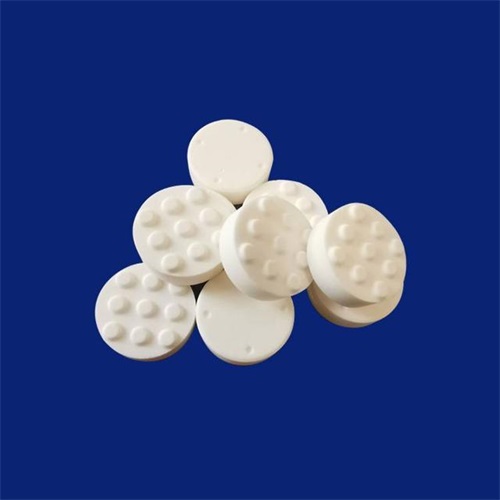
Thermal conductivity mechanism of alumina ceramics
The thermal conductivity of alumina ceramics mainly relies on two mechanisms: phonon heat transfer (lattice vibration) and photon heat transfer (thermal radiation). Phonon heat transfer dominates in the range of room temperature to medium high temperature (<1000 ℃); When the temperature exceeds 1000 ℃, the contribution of photon heat transfer gradually becomes significant.
Phonon heat transfer: In alumina crystals, atoms transfer heat through vibration, and the phonon mean free path (MFP) determines the thermal conductivity efficiency. Crystal defects such as grain boundaries, dislocations, and pores can scatter phonons, reduce MFP, and thus weaken thermal conductivity.
Photon heat transfer: At high temperatures, thermal radiation transfers energy in the form of electromagnetic waves, and its contribution is proportional to the fourth power of temperature. The high melting point of alumina (~2072 ℃) allows it to maintain its solid structure at high temperatures, but photon heat transfer becomes the main factor only at extremely high temperatures.
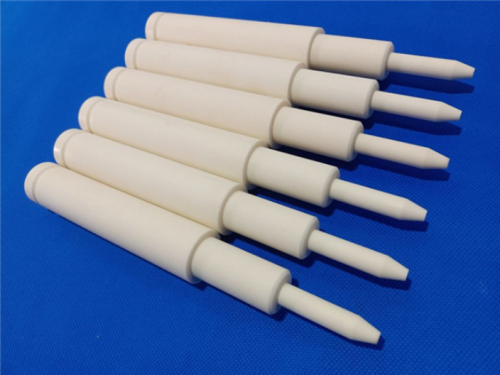
Factors affecting thermal conductivity
The thermal conductivity (λ, unit: W/(m · K)) of alumina ceramics is influenced by the overall microstructure, chemical composition, and external conditions of the material. The λ value range of typical alumina ceramics is 15-40 W/(m · K), depending on the following factors:
- Material purity
Alumina content: The λ value of high-purity (>99.5%) alumina ceramics can reach 30-40 W/(m · K), while ceramics containing impurities (such as SiO ₂, Fe ₂ O3) may have their λ value reduced to 15-20 W/(m · K) due to enhanced phonon scattering.
Second phase doping: Adding oxides such as ZrO ₂ and TiO ₂ can suppress grain growth, but excessive doping can introduce interfacial thermal resistance, leading to a decrease in the λ value. - Porosity and density
Porosity: Pores are the strong scattering centers of phonons. For every 1% increase in porosity, the λ value may decrease by 5% to 10%. For example, the λ of dense alumina ceramics (porosity<0.5%) is approximately 35 W/(m · K), while the λ of porous alumina (porosity>10%) may be lower than 10 W/(m · K).
Pore morphology: Spherical closed pores have a smaller impact on λ than irregular open pores, as the latter are more likely to form a continuous thermal resistance network. - Grain size and grain boundaries
Grain refinement: Reducing grain size increases the proportion of grain boundaries, which act as phonon scattering sources and lead to a decrease in the value of λ. For example, the λ value of nanocrystalline alumina (grain size<100nm) is 20% to 30% lower than that of microcrystalline alumina.
Grain boundary structure: Sintering aids (such as MgO) can improve the bonding state of grain boundaries, reduce grain boundary thermal resistance, and increase the λ value. - Temperature effect
Phonon phonon scattering: The temperature increase intensifies the nonlinear effect of lattice vibration, leading to the shortening of phonon MFP and a decrease in λ value with increasing temperature. For example, the λ value of alumina ceramics may decrease by 30% to 50% within the range of 25 ℃ to 1000 ℃.
Thermal expansion mismatch: In multiphase composite materials, differences in thermal expansion coefficients between different phases may cause microcracks, further reducing the value of λ. - Preparation process
Sintering method: Hot pressing sintering (HP) can prepare high-density ceramics (λ≈ 35 W/(m · K)), while atmospheric pressure sintering (APS) ceramics have a higher porosity and lower λ value.
Forming pressure: High pressure forming can reduce defects in the green body, improve the densification and λ value of ceramics after sintering.
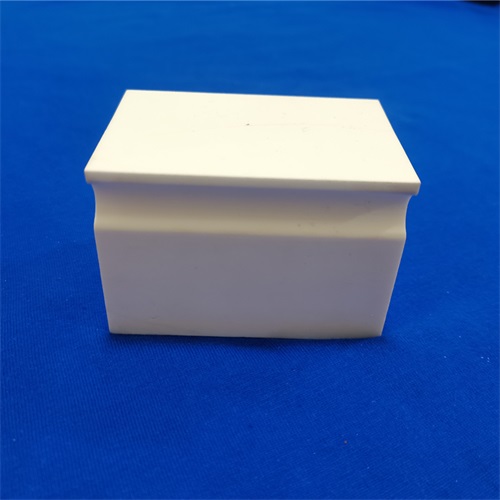
Testing and characterization of thermal conductivity
The precise measurement of thermal conductivity of alumina ceramics requires standardized methods, and commonly used techniques include:
Laser flash method (LFA): By heating the sample with laser pulses and measuring the temperature rise curve on the back, it is suitable for rapid testing at medium and low temperatures (RT~1000 ℃).
Steady state heat flow method (such as ASTM E1461): Establish a stable temperature gradient in the sample and directly calculate the λ value, suitable for high temperature (>1000 ℃) testing.
Thermal probe method: suitable for measuring local thermal conductivity and commonly used for analyzing interfacial thermal resistance of composite materials.
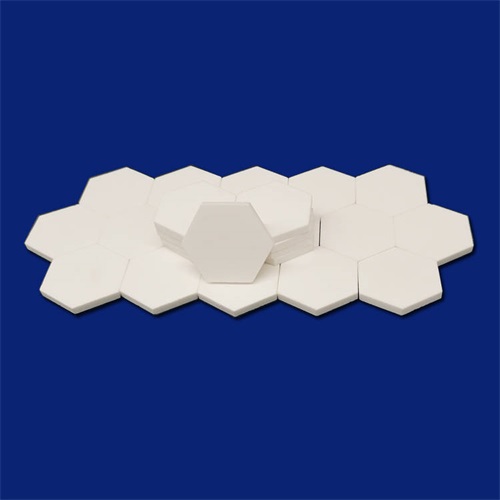
Engineering Application and Optimization Direction
- Typical application scenarios
Electronic packaging: High thermal conductivity alumina ceramics (λ>30 W/(m · K)) are used as substrates or heat sinks to match the thermal expansion coefficient of semiconductor devices.
Heat exchanger: Porous alumina ceramic (λ≈ 15~20 W/(m · K)) combines low thermal conductivity and high strength, suitable for high-temperature gas filtration.
Wear resistant components: Alumina ceramic bearings require a balance between thermal conductivity and mechanical properties, with a typically controlled λ value of 20-30 W/(m · K). - Performance optimization strategy
Composite: By adding high thermal conductivity phases such as SiC whiskers and graphene to form composite materials, the λ value can be increased to 40-60 W/(m · K).
Nanostructured design: constructing multi-level pore structures or grain orientation arrangements to enhance the λ value while maintaining strength.
Surface coating: Deposition of metal layers (such as Cu, Ag) to form gradient thermal conductivity structures, improving interfacial thermal conductivity efficiency.
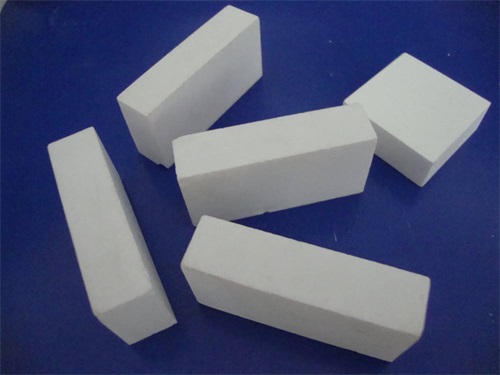
The thermal conductivity of alumina ceramics is the core parameter for their functional applications, with a range spanning 15~40 W/(m · K). Performance tailoring can be achieved through material design, process control, and composite methods. In the future, with the upgrading of thermal management requirements, the mechanism research and application innovation of thermal conductivity of alumina ceramics will continue to promote their application expansion in the fields of new energy, electronic information, and aerospace.
PREVIOUS:What is the difference between 95 ceramic and 99 ceramic in alumina ceramics
NEXT:What cutting tools are used to process zirconia ceramics
CATEGORIES
LATEST NEWS
- Petrochemical ceramic injec...
- Zirconia Ceramic Rod Custom...
- High-temperature resistance...
- What is the wear resistance...
- What is the hardness of cer...
- Aluminum oxide ceramic cust...
- What are the main aspects o...
- What are the mechanical pro...
- Thermal properties of zirco...
- What properties should be c...
